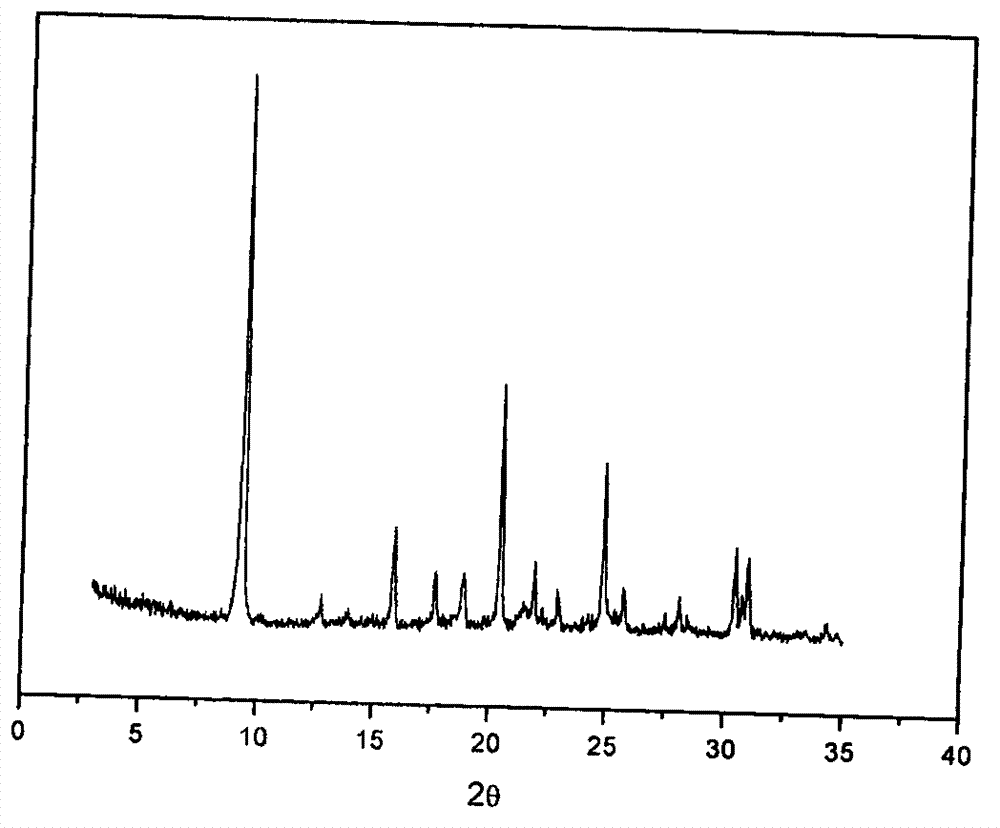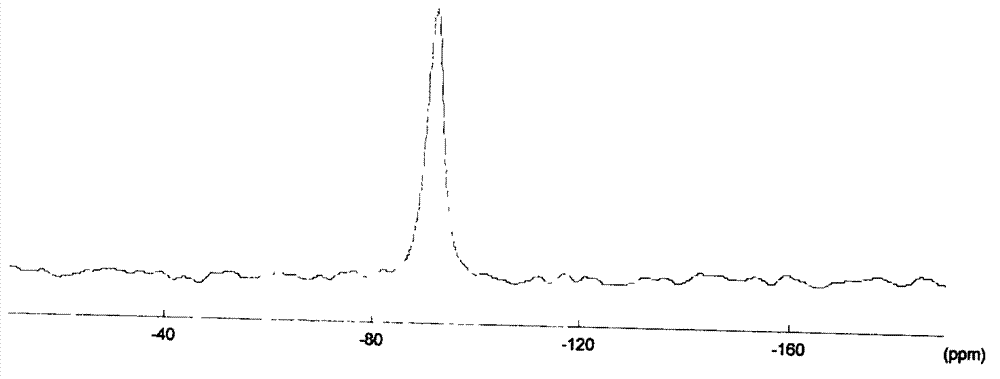Method for synthesizing SAPO (silicoaluminophosphate)-34 molecular sieve by pre-processing silicon source through phosphoric acid
A SAPO-34, synthesis method technology, applied in the direction of molecular sieve and alkali exchange phosphate, molecular sieve characteristic silicoaluminophosphate, etc., can solve the problem of poor solubility of silicon source, uneven distribution of silicon components, and poor catalytic performance of SAPO-34 molecular sieve Stability and other issues, to achieve the effect of changing the degree of dispersion and long life
- Summary
- Abstract
- Description
- Claims
- Application Information
AI Technical Summary
Problems solved by technology
Method used
Image
Examples
Embodiment 1
[0014] First preheat 0.25mL silicon source with 1.75mL phosphoric acid at 200°C for 3-4 hours and then cool. At 20°C, dissolve 1.74g of pseudo-boehmite powder with 10mL of deionized water, then add dropwise the mixture of phosphorus source and silicon source, 4.65mL of triethylamine, stir well, transfer to a stainless steel reaction kettle for crystallization at 200°C 1 to 2 days, and then according to the conventional molecular sieve post-treatment method, cooling, washing, drying, and collecting the product.
Embodiment 2
[0016] First preheat 0.25mL silicon source with 1.75mL phosphoric acid at 200°C for 3-4 hours and then cool. At 20°C, dissolve 1.74g of pseudo-boehmite powder with 10mL of deionized water, then add dropwise the mixture of phosphorus source and silicon source, 4.65mL of triethylamine, stir well, transfer to a stainless steel reaction kettle for crystallization at 180°C 1 to 2 days, and then according to the conventional molecular sieve post-treatment method, cooling, washing, drying, and collecting the product.
Embodiment 3
[0018] First preheat 0.25mL silicon source with 1.75mL phosphoric acid at 200°C for 3-4 hours and then cool. At 20°C, dissolve 1.74g of pseudo-boehmite powder with 10mL of deionized water, then add dropwise the mixture of phosphorus source and silicon source, 4.65mL of triethylamine, stir well, transfer to a stainless steel reaction kettle for crystallization at 170°C 1 to 2 days, and then according to the conventional molecular sieve post-treatment method, cooling, washing, drying, and collecting the product.
PUM
 Login to View More
Login to View More Abstract
Description
Claims
Application Information
 Login to View More
Login to View More - R&D
- Intellectual Property
- Life Sciences
- Materials
- Tech Scout
- Unparalleled Data Quality
- Higher Quality Content
- 60% Fewer Hallucinations
Browse by: Latest US Patents, China's latest patents, Technical Efficacy Thesaurus, Application Domain, Technology Topic, Popular Technical Reports.
© 2025 PatSnap. All rights reserved.Legal|Privacy policy|Modern Slavery Act Transparency Statement|Sitemap|About US| Contact US: help@patsnap.com


